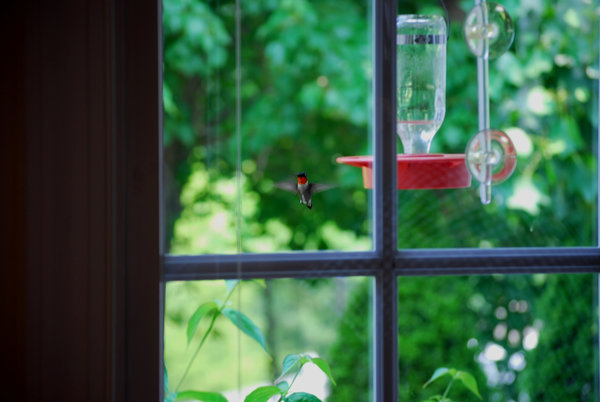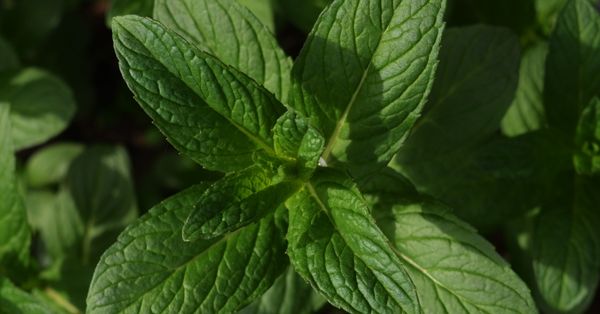It’s not surprising that many bird watchers try to lure hummingbirds to their homes by placing hummingbird feeders because they are a joy to observe.
Unfortunately, a variety of common pests, such as ants, may also be attracted to the contents of the feeder.
Hummingbirds do consume insects such as beetles, mosquitoes, and flies, but they do not prefer ants. In fact, hummingbird feeders, which contain sugar, are a common source of food for both ants and hummingbirds.
Ants can become caught within the hummingbird feeder if they get inside, contaminating the nectar and putting off any hummingbirds who might visit.
To create a friendly feeder for these lovely birds, read on for 15 quick tips on how to keep ants out of your hummingbird feeders.
Tips To Keep Ants Out Of Hummingbird Feeders
1. Install An Ant Moat
Installing an ant moat is one of the easiest ways to prevent ants from entering hummingbird feeders. An ant moat can be installed or bought separately.
Ant moats act as a physical barrier for ants, diverting their focus from the honey in the feeder. Although you could create your own ant moat, your best bets are to buy an ant moat or a feeder that already has one built in.
A simple but incredibly efficient method to keep ants away from hummingbird feeders is an ant moat.
You can purchase an ant moat that quickly attaches to your feeder if your feeder does not already have one.
Here is the Ant Moat that I use and I highly Recommend. You can buy it from Amazon.
2. If You Reside In A Dry Climate, Take Into Account Different Ant Moats
Traditional Ant moats may not function well in arid conditions because the little water inside evaporates too rapidly. Then, a different approach is required.
Try applying a thin layer of cooking-grade vegetable oil to the ant moat in place of water. Ants are known to be deterred by it.
Water moat alternatives include insecticide-filled ant guards (sold on Amazon), which have chemicals inside that kill ants.
These protectors are absolutely safe for both humans and birds when used in accordance with the product’s instructions.
3. Locate And Prevent Any Leaks

Ants will be drawn to the aroma of your homemade hummingbird recipes if your feeder is leaking. Ants are drawn to all sweet food sources, like magnets.
This appears to be the most frequent cause of hummingbird feeders turning into ant feeders. Look for any slits or leaks in your feeder and stop them immediately.
Ants will invade your feeder once they become drawn to the tasty water that is dripping. Small leaks happen because of the nectar’s propensity to expand in hot conditions and drop.
Whether that is windy may also cause leaks. As the weather wears down on the feeders, older feeders tend to leak more. Clean your feeder frequently if it’s dirty.
4. Make Use Of Fishing Line To Hang Your Hummingbird Feeders

The hummingbird feeder can be hung using a fishing line, which is typically too thin and slippery for ants to navigate. This is a clever substitute for coating the hanging rod with lubricant.
This gets rid of the requirement to cover the hanging cloth with something that can harm the hummingbirds. Using a sturdy fishing line that can withstand the weight of your nectar-filled feeder is essential.
5. Use Insecticides To Spray The Area
Consider using a pesticide to keep ants from gathering close to the hummingbird feeder.
The best option is to use a natural insect repellent, such as neem oil, which deters ants without harming your pets or any nearby wildlife.
Applying insecticides to the hummingbird feeder should be avoided, even if they are all-natural, as they might dissuade other birds as well.
6. Hand The Feeder Over to Water
The placement of your feeder is quite important, despite how odd or trivial it may sound.
Ants won’t approach the feeder because they won’t be tempted by the water, therefore, this will stop them. Because ants can’t handle the sensation of water, hanging your feeder over a body of water will deter ants, albeit it won’t totally keep them away.
Ants can’t swim very well. Using a clamp pole design is one ingenious technique to hang your hummingbird feeder over a body of water.
7. Repeatedly Move The Feeder After A Few Days

By moving your hummingbird feeder to various locations throughout your yard, you can keep ants on their toes. This will stop ants from returning because they frequently leave a scent trail to inform their colony of a tasty food source, like sugar water.
Choose a couple of locations to hang the feeder, and then change it around sometimes. Hopefully, this will scare the ants away when used in conjunction with a couple more of our other feeder-related tips.
Spread out your feeders across your garden rather than moving one closer to another just for the sake of moving it. If you have any little trees, they’re a wonderful spot to look at because hummingbirds like to have places to perch or hide nearby.
Additionally, avoid placing them next to other birdhouses or birdbaths.
8. Try Sticky Tape
You can use some adhesive tape that is exposed to ants stepping on it as a quick and forceful technique to keep ants away from hummingbird feeders.
Ants won’t be able to access the feeders’ feeding ports at all if they become stuck on the gum.
The biggest disadvantage of this approach is that, throughout the course of a hot summer, you will need to frequently replace the adhesive tape. After a few bright days, the tape’s ability to stick and smell will typically lose its effectiveness.
Due to the fact that ants’ exoskeletons are constructed of chitin, a slippery and oily substance made of cellulose polymers, ants may not be particularly deterred by adhesive tape.
Always purchase adhesive tape from the strongest brands. However, due to the point explained in the next tip, you should take caution.
9. Don’t Grease The Hanger Rod With Vaseline

While some sources advise coating the hanger rod with a slick substance—such as petroleum jelly—to prevent ants from getting to the feeder, this tactic has a number of drawbacks.
Most importantly, if petroleum jelly like Vaseline gets on hummingbirds’ feathers, it can be quite dangerous. They can’t clean it correctly, which could have an adverse effect on their capacity to fly and hinder their ability to defend themselves from both hot and cold temperatures.
Petroleum jelly application is not only potentially dangerous but also messy and requires frequent repetition, which can be inconvenient.
Additionally, it’s crucial to refrain from covering the hanger rod with any potent adhesives, such as double-sided tape, as doing so could harm hummingbirds if they get into contact with it.
10. Consider A Shady Area
A location with some shade is ideal for placing a hummingbird feeder. The place needs to be exposed to some light because hummingbirds may have problems finding it if it’s too dark.
Any feeder in a region that receives excessive sunlight will have its nectar heat up excessively, rendering it unattractive to hummingbirds. If the feeder is made of plastic, hot weather will cause it to expand, and this expansion may cause leaks.
There are methods for determining what would constitute the best location for partial shade. Visibility is an essential factor to take into account.
Hummingbirds won’t be able to see your feeder if an object, such as a bush, tree, or decorative pillar, covers more than half of it.
Make sure any items covering your feeder don’t obstruct the area hummingbirds need to access the nectar. Bees should not be allowed near hummingbird feeders; therefore, this is also an excellent idea.
11. Utilize An Ant Guard
Sometimes, these resourceful creatures manage to construct a bridge over an ant pond to reach a hummingbird feeder. Yikes! (However, pretty brilliant as well.)
You might want to buy an ant guard, which includes the mild insecticide Permethrin, to prevent these super ants from climbing over one another in the direction of your hummingbirds’ nectar and feeder.
Permethrin is safe for use near birds, people, and pets while deterring ants. When your ant moat isn’t quite doing the job on its own, here is a little extra protection.
A stronghold with hummingbird feeders sounds like a castle with an ant moat and an ant guard!
We always advise attempting natural remedies before turning to store-bought pesticides.
12. Clean The Feeder Every Day
Since hummingbird feeder shapes are very simple to clean, maintaining one is not a difficult process. Hummingbirds can avoid ant infestations by keeping their feeder clean on a regular basis. Your time is just required for the cleaning procedure for no more than 30 seconds.
Every day, you should clean your feeder. Maintaining proper hygiene for the wild animals you care about is just as important as preventing ants from invading hummingbird feeders.
To make sure your feeder isn’t leaking, you must regularly check on it. You most certainly have a leak if you start to see ants gathering on the ground beneath your hummingbird feeder.
Clean your feeder inside and out each time you check to refill it. Pay extra attention to the outside to remove any residue that may have accumulated there to prevent ant attraction.
13. Try Using Mint Or Bay Leaves

Ants are thus similar to children in that they enjoy dessert but not as much as they do vegetables. Use plants to fend off ants.
Bay leaves have a strong aroma that repels ants, so placing or rubbing bay leaves on or near your hummingbird feeder will effectively keep them away. Another all-natural ant repellant you may use to safeguard your feeder is mint leaves.
To prevent ants from taking the chance, it is better to plant mint close to where you would be installing your hummingbird feeder.
Mint is relatively simple to cultivate in a garden. In actuality, mint has a life of its own. Get some mint seeds and plant them where you want them to flourish but not overgrow—in a windowsill, a herb garden, or even a small pot on your patio—to keep ants away from your hummingbirds.
To thrive, mint only needs fertile soil and plenty of moisture. The plant does like some shade, but it may still thrive in direct sunlight as long as the soil is kept nicely moist.
14. Use Common Substances To Ward Off Ants
If ant moats weren’t successful in keeping ants away from hummingbird feeders, you could try some common home items.
If you must use common home substances to ward off ants, be sure they are safe to use, as it is recommended to avoid buying commercial ant repellents. Some examples of safe substances include vinegar, cayenne pepper, and lemon water.
To keep ants away from your feeder, you can either spray them around the area or attempt a special natural ant-repellent spray solution that just calls for two essential oils. The two oils are peppermint and clove bud essential oils.
In a test, clove essential oil exhibited a 100% ant mortality rate within 6 hours, demonstrating its effectiveness against ants.
Peppermint essential oil, which is well-recognized for being a stimulating and cooling medicinal herb, is excellent for getting rid of ants.
Menthol, a vital component of this oil, has biocidal effects and is an efficient pest controller. These oils are thought to be safe when used properly.
15. Periodical Maintenance
Your hummingbird feeder needs to be routinely maintained. Your feeders may begin to fail due to weather conditions or aging.
Check your feeders frequently for any indications of cracks, faulty fittings, or broken components that could be leaking nectar.
Ants will have easy access to the nectar if the feeder leaks. Additionally, your feeder will smell better. Which, as you would have imagined, will draw in more ants.
If your feeder is damaged beyond repair, get a new feeder with an ant moat instead. Cover the broken portion of one of your feeding ports with duct tape. By doing this, ants won’t accidentally fall into the bigger hole and contaminate the nectar.
Conclusion
You now have 15 different all-natural methods at your disposal to keep the ants away.
Keep in mind that the goal is to repel the ants rather than eliminate them. They do a terrific job in your yard and can serve as a nice source of food for other birds that come to visit.
FAQ
Can Ants Harm Hummingbirds In A Feeder?
Your nectar is generally not the greatest for hummingbirds if it contains dead or decaying insects. The venom of some ants contains formic acid, which at the very least, might alter the flavor of the food consumed by hummingbirds.
Are Hummingbirds Killed By Ants?
It’s doubtful that ants will harm a hummingbird at your feeder. But if an army came upon a wounded or sickly hummingbird, they might be able to kill it provided they had the correct kind of aggressive ant species, particularly those that can deliver a poisonous bite.
Where Should I Hang My Brand-New Hummingbird Feeder?
Away from the sun and wind, place your hummingbird feeder. The sun may turn the combination rotten, and the wind could move the feeder and let the mixture spill.
How Do I Get Hummingbirds To Come To My Feeder?
Although there are some things you can do to make it easier for the tiny birds to find your nectar feeder, hummingbirds will eventually find it. They can find it more easily if you tie a red ribbon to the feeder wire or pole.
Although hummingbirds will also eat clear nectar from hummingbird feeders, some enthusiasts prefer to utilize red nectar.
Another “tried and tested” technique is to grow hummingbird-friendly flowers close to the feeder area.
The nectar in the feeder may also be discovered by them if you place a birdbath nearby in your yard to entice them.
Does Red Actually Attract Hummingbirds?
Hummingbirds have superior color vision than humans, which even extends into the UV spectrum. They have good color vision. Because of the vegetation, most of nature is green.
It is no accident that many hummingbird-pollinated blooms are red or orange since these hues stand out the most against green and draw hummingbirds to them the quickest.
Hummingbirds, on the other hand, are extremely inquisitive animals that constantly search their surroundings for food sources to meet their high-energy requirements.
As a result, they frequently “stumble across” non-red flowers with high nectar loads and will visit those blooms again and again as long as nectar is present.
Your feeder does not need to be red if you have a known area where hummingbirds frequent; due to their curiosity, hummingbirds will find a food supply regardless of color.
Last Updated on March 22, 2023 by Lily Aldrin
